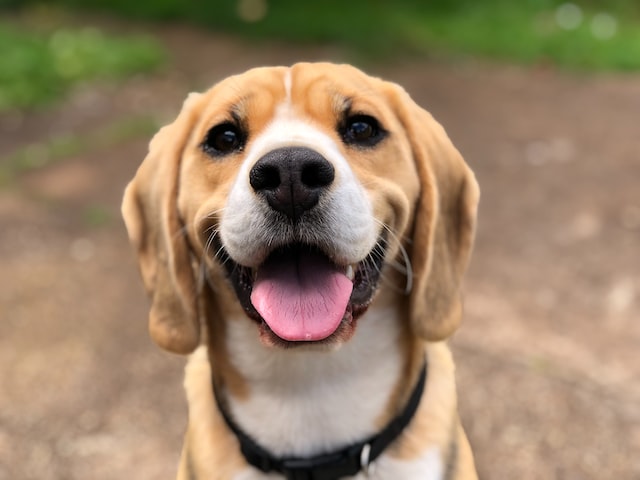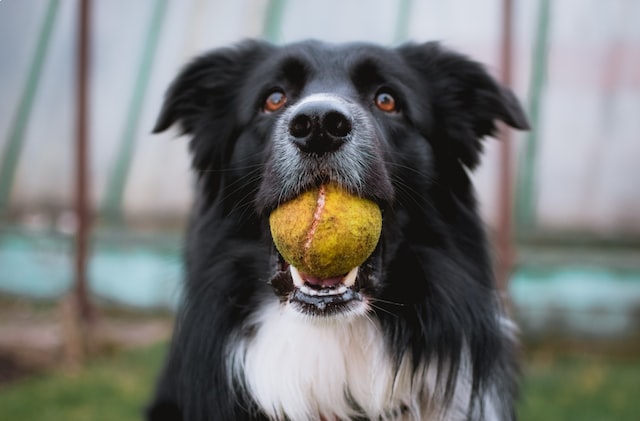The Beagle

The Beagle loves company and is excellent around children and other dogs. When it comes to other house pets, if the Beagle is raised with them, the breed will adjust well to other non-dog house pets. They playful and gentle disposition makes them a natural choice as a house pet. Beagles are naturally polite dogs and will quickly warm up to strangers once they eliminate them as threats. They make good watchdogs and will bark and growl at the slightest hint of an intruder or danger.
Beagle dogs love being in the company of their family. If you leave them alone for a long time, they might resort to bark and howl to express their loneliness. Don’t leave them unsupervised outdoors, should they jump the fence and go explore the town. The Beagles hunting instinct is another reason to keep them on a leash then they are outdoors.
Like any other average house pet, they need their fair share of exercise of a daily walk and the occasional hiking and jogging. Their high energy levels make them great companion for any form of exercise that requires a lot of stamina. One of the most difficult breeds to train and housebreak, Beagles find it a little difficult to learn commands and stick to discipline.
Overall, they do make for great pets especially if you have children and looking for a good companion and guardian for them.
Care & Health:
- Major concerns: intervertebral disc disease, CHD
- Minor concerns: glaucoma, epilepsy
- Occasionally seen: deafness, hemophilia A, cataracts
- Suggested tests: hip, (eye)
- Life span: 12 – 15 years
- Grooming: With the short coat that they come with, Beagles require an occasional brushing. They do however shed a lot, so you might want to brush the coat daily for 5-10 minutes to catch the dead fur.
History:
The Beagle is said to have been a descendent of the hounds that existed during the Romans. Originally bred to chase rabbits, the Beagle we know today was developed in England in the 1830s and the first Beagle club of England was formed in 1890. The AKC admitted the Beagle in 1884 and as of 2007, their popularity ranked 5th out of 157 breeds.
The Papillon
The Papillon is a happy and affectionate lapdog who also loves to run and play outdoors!

The Papillon dog loves to play outdoors and owing to its high energy level, a fair amount of exercise is required on a daily basis. It’s advised to put them on a leash when outdoors, especially around larger dogs; it could lead to some ugly confrontations arousing from jealousy.
They are extremely easy to train and will do anything to please you and learn new tricks. This also makes them an excellent choice for animal assisted therapy. The Papillon breed dote on their owners and are overall a happy breed. Even with people outside of the family, they are quick to make friends and are polite dogs. The breed adapts well around older children and other house pets including cats. Because of the dog’s small size, younger children might not know how to handle them; the breed also shouldn’t be allowed to jump from higher places, lest they should hurt themselves.
Care & Health:
- Major concerns: none
- Minor concerns: PRA, patellar luxation
- Occasionally seen: none
- Suggested tests: knee, eye
- Life span: 12 – 15 years
- Grooming: Due to their high shedding, the Papillon might require a daily brushing to catch all the dead hair before it falls all over the house.
History:
The Papillon gets its name from the butterfly ears; ‘papillon’ is French for ‘butterfly’. Said to be a descendent of the Phalane breed, the Papillon were a favoured breed amongst the European nobility and was popular in Spain, France and Italy.
The AKC admitted the Papillon in 1935 and as of 2007, its popularity ranks 36th out of 157 breeds.
